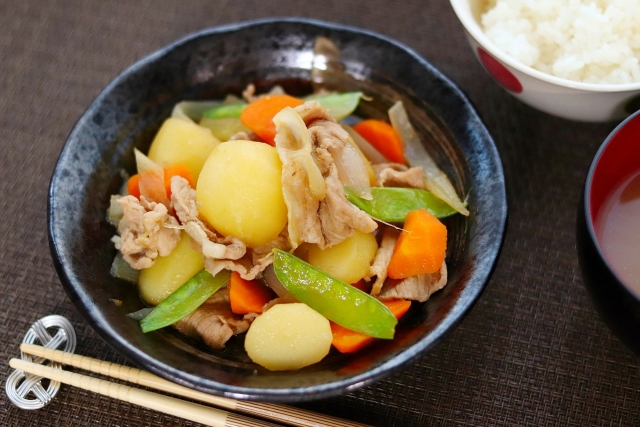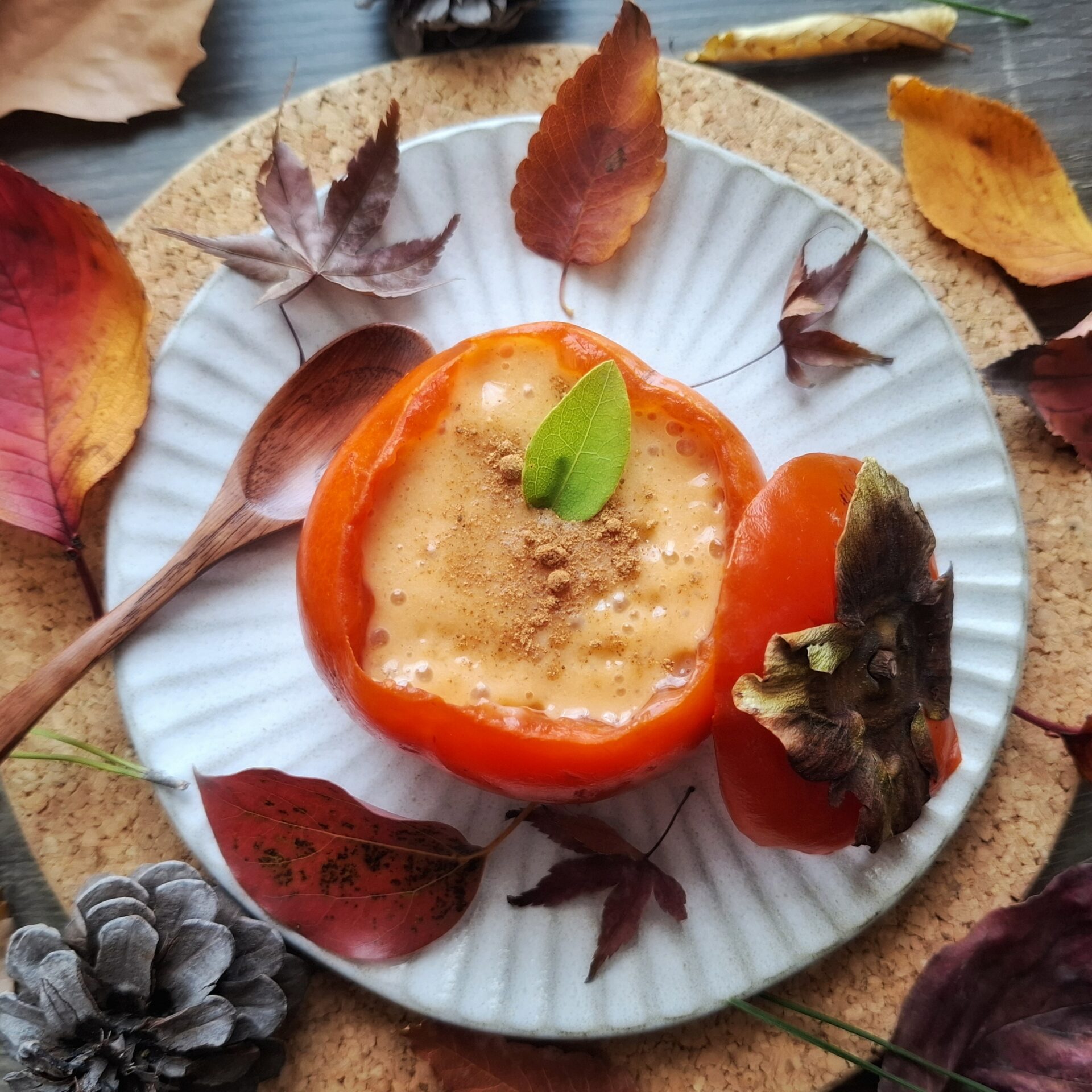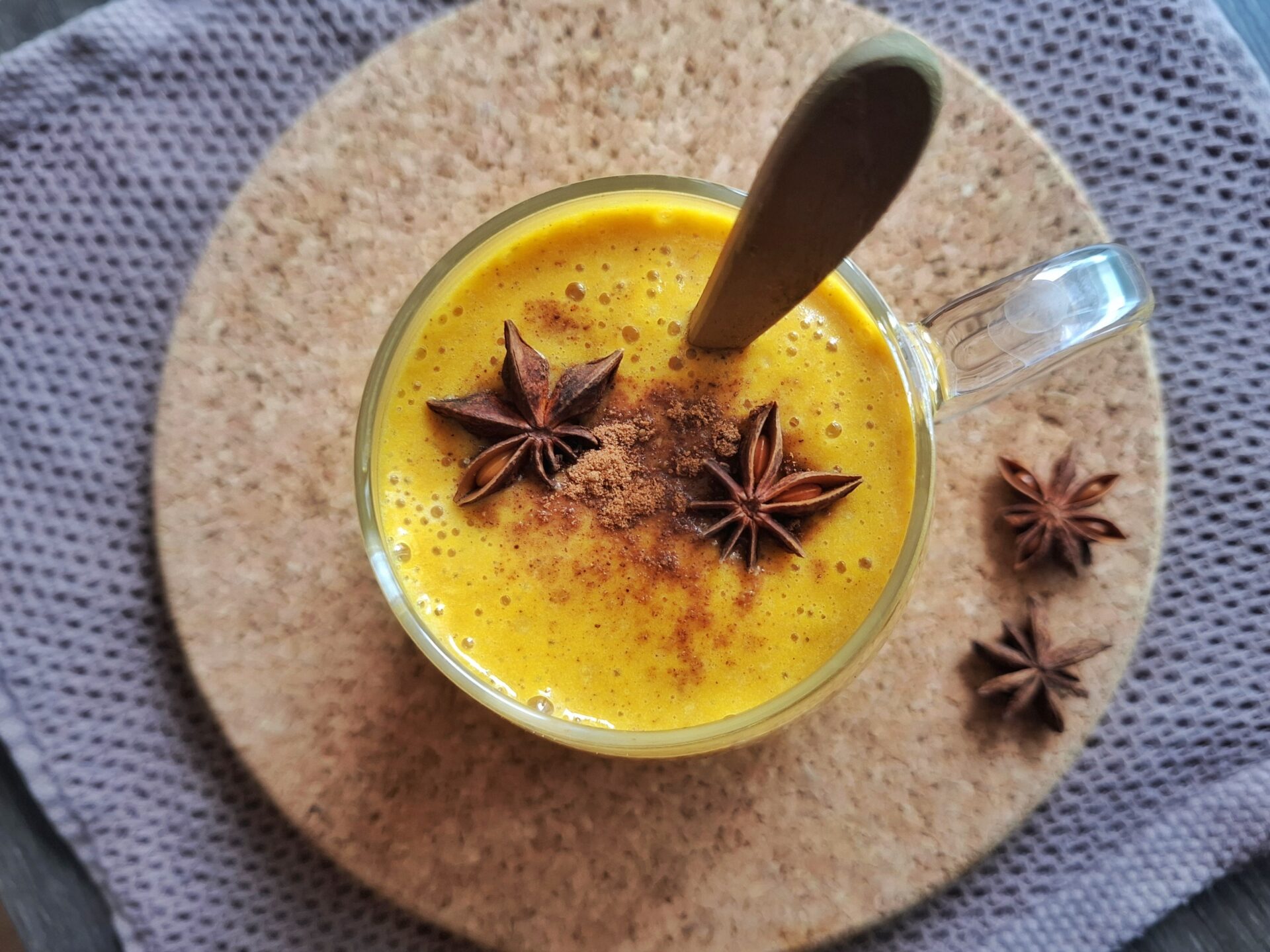Vegan Nikujaga(肉じゃが): Taste of “Mom’s Cooking” in Japan


What comes to mind when you hear “a taste of home?,” Norio?

“Nikujaga,” hands down! Ahh I really miss my mom’s Nikujaga…

Makes sense. For many people in Japan, it’s one of the golden comfort foods. Did you know the history and culture of Nikujaga?

No, I’m all ears!

In this article, I will share with you Nikujaga’s history and culture, as well as our plant-based recipe. Let’s dive in!
What is Nikujaga?
Nikujaga (肉じゃが), is a classic Japanese meat and potato stew. Literally, “niku” stands for meat, and “jaga (abbreviation of jagaimo)” stands for potatoes.
Either beef or pork is used traditionally, depending on the region. According to a national survey, pork tends to be preferred in northern Japan (colored blue), whereas beef tends to be preferred in southern Japan (colored yellow), as shown below.
History of Nikujaga
The origin of Nikujaga goes back to the 19th century, during the Meiji period.
The inventor of Nikujaga is known to be Heihachiro Togo, a famous Japanese navy who couldn’t forget the taste of beef stew during his studies in England.
Integrating the British stew and Japanese Sukiyaki, Togo is said to have devised a Japanese version of beef stew and asked for cooking it to a chef in the British Royal Navy who didn’t know how to cook stew.

Since it was highly nutritious and used similar ingredients to the well-known Navy curry at that time, this dish called Amani (sweet simmered dish) became popular among the Navy.
It was not until the 1970s, when the public citizens had enough affordability for meat and potatoes, that this dish became widely common as “Nikujaga”. Together with Japanese curry rice, which requires similar ingredients, Nikujaga has spread as a popular home dish.
Maizuru vs Kure: Debate on the place of Nikujaga’s origin
The home region of Nikujaga remains controversial between two cities: Maizuru in Kyoto and Kure in Hiroshima.

Togo’s episode took place here in Maizuru!

Nope, here in Kure!
In fact, Togo had already been working in Kure 10 years before Maizuru. It doesn’t make sense for him to say “I miss British Stew” after a decade since he came back to Japan.
Maizuru’s assertion was created for tourism promotion.
This debate has been continued for nearly 30 years to this day.


SA-SHI-SU-SE-SO(さしすせそ) in Japanese Cooking
Have you ever heard of the mnemonic “SA-SHI-SU-SE-SO” in Japanese cuisine? This indicates the seasoning order in classic Japanese cuisines such as Nimono (煮物simmered stew).
Basically, you put the 5 major Japanese seasonings in the following order.
- さ(SA) = Sato (砂糖) =Sugar
- し(SHI) = Shio (塩) =Salt
- す(SU) = Su (酢) = Vinegar
- せ(SE) = Sheuyu (an ancient word for Shoyu 醤油)= Soy sauce
- そ(SO) = Miso (味噌) = Miso
Salt is added at an earlier stage. This is mainly because salt functions as an umami booster while stirred with veggies.
Sugar comes even earlier than salt because its particles are bigger than salt’s counterparts, taking a longer time to merge.
Vinegar, soy sauce, and miso are added at a later stage, either all at once or divided in several times respectively. Otherwise, the aromas and flavors of those fermented seasonings would fade away (especially soy sauce and miso, which are koji-fermented).

Following this order maximizes the power of ingredients like me, resulting in epic tastes!

Recipe: Plant-based Nikujaga

Fascinating…now I can’t wait to cook it! By the way, why is your Nikujaga recipe plant-based (vegan)?

Simply because I wanted all of you to enjoy Japanese dishes, including vegetarians, vegans, and religious groups of people.
Here we go!

Plant-based Nikujaga (Japanese “Meat” and Potato Stew)
Equipment
- 1 Aluminum foil as a substitute for Japanese Otoshi-buta (simmering lid for Japanese stew)
Ingredients
- 3 medium size potatoes
- 1 carrot
- 1 onion
- 70 g dry soy mock meat can be swapped for seitan or pressed firm tofu
- 1 package shirataki konjak noodles cooked according to the package if preferred
- 3 tbsp cooking oil
Dashi (broth)
- 10-20 g kombu (dried kelp) or dried shiitake mushrooms This dashi-making process can be skipped, but remember dashi is a great umami-enhancer!
- 600 ml water
Seasonings
- 3 tbsp mirin (sweet sake)
- 2 tbsp sake
- 2 tbsp miso
- 2 tbsp soy sauce
- 2 tbsp tbsp amazake can be swapped for 1 tbsp sugar
Topping and Garnish
- 8-10 pieces snow peas can be swapped for runner beans or green peas
Instructions
- Put kombu/shiitake into 600 ml water. Soak overnight in a fridge. (The kelp and mushrooms are edible and nutritious, so cut them into small pieces and use them as a part of the ingredients unless it’s not your cup of tea)
- Cut potatoes, a carrot, and an onion into equally large chunks. By cutting them into the same size, everything will be cooked nice and evenly. Big chunks are preferred traditionally to enjoy rich texture.
- In a large pot, sprinkle cooking oil. Add the onion and stir over mid-high for 2-3 minutes.
- Meanwhile, in a medium pot, boil water with a pinch of salt. Add snow peas and blanch for 1 minute. ( Note: Salt is used to make the color brighter!) Set them aside for the final garnish.
- Cook soy mock meat in the boiled water in the same medium pot for 5 minutes. Rinse it off with cold water in a colander while squeezing with your hands a couple of times (for soy meat to get better soaked in flavor )
- Into the large pot, add kombu dashi, mirin, and sake (,and sugar if you use one instead of amazake).
- Add potatoes, carrot, shirataki, and soy meat.

- Mix miso, soy sauce, and amazake, then add this mixture to the pot.
- Cover everything with an aluminium foil lid. Simmer for 10-12 minutes over mid-high.
- Cool it down for 30-60 minutes. If you can touch the pan safely, it's ready. Because the flavor sits inside when cooled, doing so enables the ingredients to absorb the umami-rich soup!
- Re-heat gently before serving. Add snow peas on top, and enjoy!















Your words make my day!